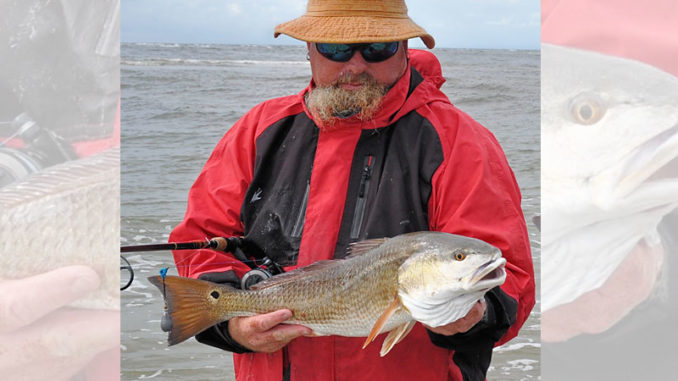
Cooler water, moving baitfish trigger big strikes from redfish
In spring and fall, the redfish patrolling North Carolina’s inshore waters will attack topwater lures. But October may be the best season to enjoy arm-jarring, adrenalin-pumping surface explosions.
“Waters start cooling in October and baitfish start moving from shallow to deeper water,” said Dale Collins of Swansboro’s Fish or Die Charters. “Redfish, trout and other fish follow them. The bite gets active. When I’m fishing, the first thing I look for is baitfish.”
During October, Collins (252-422-4326) hunts reds both under and inside the 18- to 27-inch slot.
“I don’t think there’ll be as many 25- to 27-inch fish as last fall,” he said. “We’ve been catching mostly lower- and under-slot reds. I’ve heard this referred to as a ‘hatchery year.’ That means (2021) should be a good year because they’re always eating and growing. But we’ll land some nice reds this year.”
Collins rarely uses live or cut bait. He prefers artificial lures.
“I like to fish a Skitter Walk 11 in gold mullet or sometimes silver mullet color,” he said. “Early in the day, I’ll throw smaller (lures) to match baitfish sizes.”
If he’s fishing in grass, Collins switches out the Skitter Walk’s factory trebles for a single, 1/0 in-line hook to cut down hang-ups.
Collins doesn’t have to travel far from his Cedar Point base, fishing behind Emerald Isle, Bear and Browns islands and the White Oak River. “Anywhere in the marshes with oysters,” he said, “but I prefer high tide. At low tide, it’s tough to get in some places.”
Look for oyster mounds at high tide
Hot spots include marsh points and creek mouths with oyster beds in 18 to 24 inches of water.
“Oyster mounds during high tides are good places to find reds,” Collins said. That’s because at low tide, the water is too far from marsh edges to get lures near grass. “The best times are two hours before high tide through two hours after the tide starts to fall.”
If topwater lures aren’t effective, Collins changes to 1/16-ounce Bluewater Candy jigheads — 1/8-ounce on windy days — carrying 4-inch white or chartreuse Gulp shrimp. His equipment includes 7-foot Star Seagis 4- to 10-pound-class rods, 2500 Series Penn Conflict 2 spinning reels and 10-pound, moss-green Power Pro braid with 18 inches of a 30-pound, Yo-Zuri fluorocarbon leader.
When topwater lures and jigs don’t produce action, he’ll try a spinnerbait.
“If I’m not seeing any finger mullets, minnows or crabs, I’ll throw a 1/4-ounce Falling Tides or a Strike King spinnerbait with a white-and-chartreuse skirt,” Collins said. “Sometimes, I’ll use a root-beer skirt if other colors aren’t getting hit.”
His basic technique is to slow-roll spinnerbaits off the bottom.





Be the first to comment